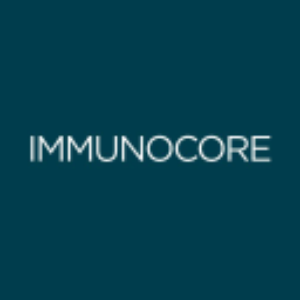Immunocore presents Phase 1 data for hepatitis B candidate at AASLD’s The Liver Meeting
Rhea-AI Summary
Immunocore (Nasdaq: IMCR) presented Phase 1 single‑ascending‑dose data for IMC-I109V at AASLD The Liver Meeting on November 7, 2025. The bispecific TCR candidate showed a manageable safety profile and pharmacodynamic activity consistent with its mechanism, including dose‑dependent reductions in HBsAg at doses ≥ 7 mcg, with HBsAg nadirs typically by day 8. Four participants met the predefined ≥ 0.2 log10 HBsAg reduction threshold. Treatment‑related adverse events were mostly transient; one Grade 2 cytokine release syndrome at 20 mcg resolved with treatment.
The company plans further evaluation in multiple‑dose regimens.
Positive
- Dose‑dependent HBsAg reductions observed at doses ≥ 7 mcg
- 4 of 20 participants met ≥ 0.2 log10 HBsAg reduction threshold
- HBsAg nadirs typically reached by day 8 post‑dose
- Short serum half‑life (< 24h) with rapid resolution of TRAEs
Negative
- One Grade 2 cytokine release syndrome (SAE) at 20 mcg requiring corticosteroids
- ALT elevations Grade 1–3 occurred, indicating transient liver enzyme increases
- Only 4 of 20 participants met predefined HBsAg PD threshold (limited responder rate)
News Market Reaction 1 Alert
On the day this news was published, IMCR gained 6.03%, reflecting a notable positive market reaction.
Data tracked by StockTitan Argus on the day of publication.
Single ascending dose data show IMC-I109V has manageable safety profile and antiviral activity
IMC-I109V is a bispecific T cell receptor targeting a peptide derived from HBsAg that is presented by HLA-A*02:01 on the surface of infected hepatocytes
(OXFORDSHIRE, England & CONSHOHOCKEN, Penn. & GAITHERSBURG, Md., US, November 7, 2025) Immunocore Holdings plc (Nasdaq: IMCR) (“Immunocore” or the “Company”), a commercial-stage biotechnology company pioneering and delivering transformative immunomodulating medicines to radically improve outcomes for patients with cancer, infectious diseases and autoimmune diseases, has today announced data from its Phase 1 trial of IMC-I109V, a TCR bispecific (ENVxCD3) candidate designed to specifically eliminate HBV-infected hepatocytes expressing hepatitis B surface antigen (HBsAg) via T cell redirection.
The data, presented in a poster at The Liver Meeting, organized by the American Association for the Study of Liver Diseases, show that IMC-I109V is generally well tolerated in all evaluated doses and exhibits pharmacodynamic (PD) effects consistent with its mechanism of action, including reduction in HBsAg levels, clearance of which is indicative of resolved hepatitis B infection.
“Dose-dependent decreases in serum HBsAg following a single dose of IMC-I109V are promising and show that a T cell receptor-based approach to treating chronic HBV infection warrants further investigation,” said David Berman, Head of Research and Development. “These data – alongside the encouraging safety profile and antiviral activity seen in our ImmTAV candidate for HIV – reinforce the potential of our platform to achieve functional cures for chronic infectious diseases.”
The trial enrolled 20 participants in sequential cohorts evaluating ascending doses (0.8 mcg; 2.4 mcg; 7 mcg; 20 mcg) of IMC-I109V, given as a single IV infusion on day 1. Each dose was assessed for tolerability and PD activity, defined by either a ≥ 0.2 log10 reduction in serum HBsAg or by predefined increases in alanine aminotransferase (ALT) or serum IL-6 levels. Escalation to the next dose level was permitted for any dose that was deemed tolerable but was associated with PD activity in less than half the participants in a cohort.
Participants were evaluated for safety, tolerability, pharmacokinetics (PK) and PD activity up to week 4.
At doses ≥ 7 mcg, consistent PD activity was observed, including a dose-dependent decrease in HBsAg, which typically reached a nadir by day 8. Reductions meeting the predetermined threshold of ≥ 0.2 log10 IU/ml were seen in 4 individuals, 2/6 in the 7 mcg cohort and 2/8 in the 20 mcg cohort. In 3 of these 4 participants, HBsAg remained below pre-dose levels throughout follow-up. Reductions in HBsAg levels coincided with immune activation (IL-6 elevations) and transient elevations in ALT, which were expected based on the mechanism of action.
Treatment-related adverse events (TRAEs) were observed in 8 participants, including transient systemic symptoms (mostly Grade 1-2) in the 24h following infusion. ALT elevations (Grade 1-3), resolved to ≤ Grade 1 within 14 days. Bilirubin and prothrombin values remained within normal ranges throughout the study. The rapid resolution of all TRAEs was consistent with the short serum half-life (< 24h) of IMC-I109V.
One of 8 participants in the 20 mcg cohort developed Grade 2 cytokine release syndrome (fever, transient hypoxia and transient hypotension) within 4 hours of the end of infusion. This event responded rapidly to supportive treatment and corticosteroid therapy, resolving within 4 hours. Although dose-limiting toxicity criteria were not met, this event was classified as a serious adverse event (SAE) due to extension of the hospital stay (<1 day). Subsequently, 2 participants received the 20 mcg dose with corticosteroid premedication as an additional precaution. No SAEs occurred in these individuals.
IMC-I109V is designed to overcome HBV-specific T cell exhaustion by recruiting non-exhausted T cells to eliminate hepatocytes harboring covalently closed circular DNA or integrated HBV DNA.
The Company believes this first-in-human evidence of reductions in HBsAg via this novel mechanism supports further evaluation of IMC-I109V in multiple dose regimens.
###
About ImmTAV molecules and infectious diseases
ImmTAV (Immune mobilizing monoclonal TCRs Against Virus) molecules are novel bispecifics that are designed to enable the immune system to recognize and eliminate virally infected cells.
Immunocore is advancing clinical candidates to cure patients with HIV and hepatitis B virus (HBV). The Company aims to achieve sustained control of HIV after patients stop anti-retroviral therapy (ART), without the risk of virological relapse or onward transmission. This is known as ‘functional cure’. For the treatment of HBV, the Company aims to achieve sustained loss of circulating viral antigens and markers of viral replication after stopping medication for people living with chronic HBV.
About Immunocore
Immunocore is a commercial-stage biotechnology company pioneering the development of a novel class of TCR bispecific immunotherapies called ImmTAX – Immune mobilizing monoclonal TCRs Against X disease – designed to treat a broad range of diseases, including cancer, autoimmune diseases and infectious diseases. Leveraging its proprietary, flexible, off-the-shelf ImmTAX platform, Immunocore is developing a deep pipeline in multiple therapeutic areas, including numerous active clinical and pre-clinical programs in oncology, infectious diseases, and autoimmune diseases. The Company’s most advanced oncology TCR therapeutic, KIMMTRAK, has been approved for the treatment of HLA-A*02:01-positive adult patients with unresectable or metastatic uveal melanoma in the United States, European Union, Canada, Australia, and the United Kingdom.
Forward Looking Statements
This press release contains “forward-looking statements” within the meaning of the safe harbor provisions of the Private Securities Litigation Reform Act of 1995. Words such as “may”, “will”, “believe”, “expect”, “plan”, “anticipate”, “aim”, “continue”, “target” and similar expressions (as well as other words or expressions referencing future events or circumstances) are intended to identify forward-looking statements. All statements, other than statements of historical facts, included in this press release are forward-looking statements. These statements include, but are not limited to, statements regarding the therapeutic potential, including tolerability, safety profile and antiviral activity, of Immunocore’s product candidates, including IMC-I109V; the potential of the Company’s bispecific TCR technology platform to offer a new approach for the treatment of certain chronic infections, including a T cell receptor-based approach to treating chronic HBV infection; expectations regarding the design, progress, timing, enrollment, randomization, scope, expansion, funding, and results of the Company’s existing and planned clinical trials, those of the Company’s collaboration partners or the combined clinical trials with the Company’s collaboration partners; and the Company’s goals to develop and commercialize product candidates based on its KIMMTRAK platform alone or with collaboration partners; the expected submission of clinical trial applications; the potential regulatory approval, expected clinical benefits and availability of the Company’s product candidates; and the Company’s expectations regarding the payment of sales-related rebate accruals in the second half of 2025. Any forward-looking statements are based on management’s current expectations and beliefs of future events and are subject to a number of risks and uncertainties that could cause actual events or results to differ materially and adversely from those set forth in or implied by such forward-looking statements, many of which are beyond the Company’s control. These risks and uncertainties include, but are not limited to, the impact of worsening macroeconomic conditions on the Company’s business, financial position, strategy and anticipated milestones, including Immunocore’s ability to conduct ongoing and planned clinical trials; Immunocore’s ability to obtain a clinical supply of current or future product candidates or commercial supply of KIMMTRAK or any future approved products; Immunocore’s ability to obtain and maintain regulatory approval of its product candidates, including KIMMTRAK; Immunocore’s ability and plans in continuing to establish and expand a commercial infrastructure and to successfully launch, market and sell KIMMTRAK and any future approved products; Immunocore’s ability to successfully expand the approved indications for KIMMTRAK or obtain marketing approval for KIMMTRAK in additional geographies in the future; the delay of any current or planned clinical trials, whether due to patient enrollment delays or otherwise; Immunocore’s ability to successfully demonstrate the safety and efficacy of its product candidates and gain approval of its product candidates on a timely basis, if at all; competition with respect to market opportunities; unexpected safety or efficacy data observed during preclinical studies or clinical trials; actions of regulatory agencies, which may affect the initiation, timing and progress of clinical trials or future regulatory approval; Immunocore’s need for and ability to obtain additional funding, on favorable terms or at all, including as a result of worsening macroeconomic conditions, including changes in inflation and interest rates and unfavorable general market conditions, and the impacts thereon of the war in Ukraine, the conflict in the Middle East, and global geopolitical tension; Immunocore’s ability to obtain, maintain and enforce intellectual property protection for KIMMTRAK or any of its product candidates it or its collaborators are developing; and the success of Immunocore’s current and future collaborations, partnerships or licensing arrangements. These and other risks and uncertainties are described in greater detail in the section titled "Risk Factors" in Immunocore’s filings with the Securities and Exchange Commission, including Immunocore’s most recent Annual Report on Form 10-K for the year ended December 31, 2024 filed with the Securities and Exchange Commission on February 26, 2025, as well as discussions of potential risks, uncertainties, and other important factors in the Company’s subsequent filings with the SEC. All information in this press release is as of the date of the release, and the Company undertakes no duty to update this information, except as required by law.
Contact Information
Immunocore
Sébastien Desprez, VP Communications
T: +44 (0) 7458030732
E: sebastien.desprez@immunocore.com
Follow Immunocore on LinkedIn: @Immunocore
Investor Relations
Clayton Robertson / Morgan Warenius
T: +1 (215) 384-4781
E: ir@immunocore.com









